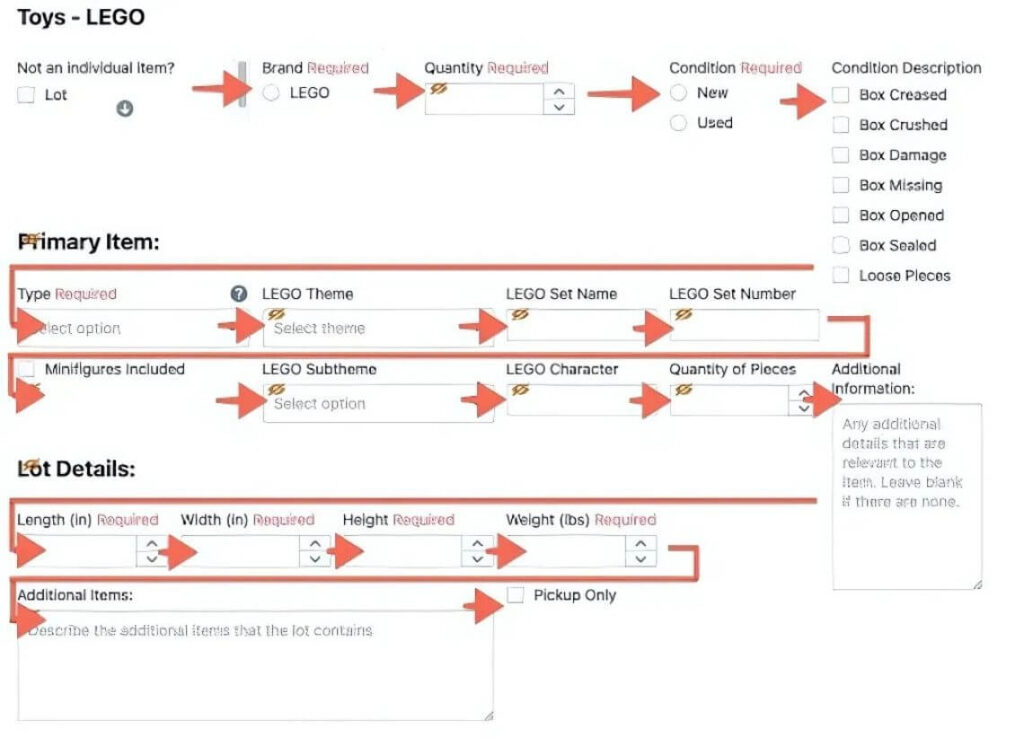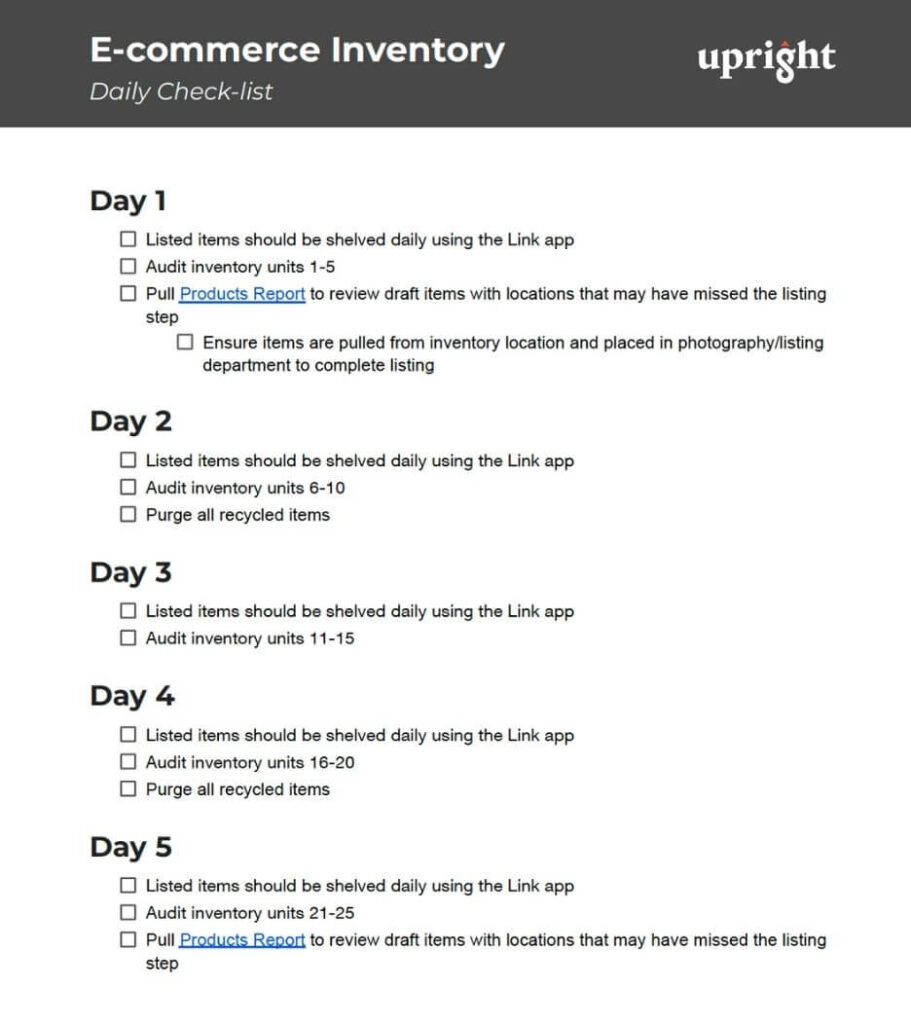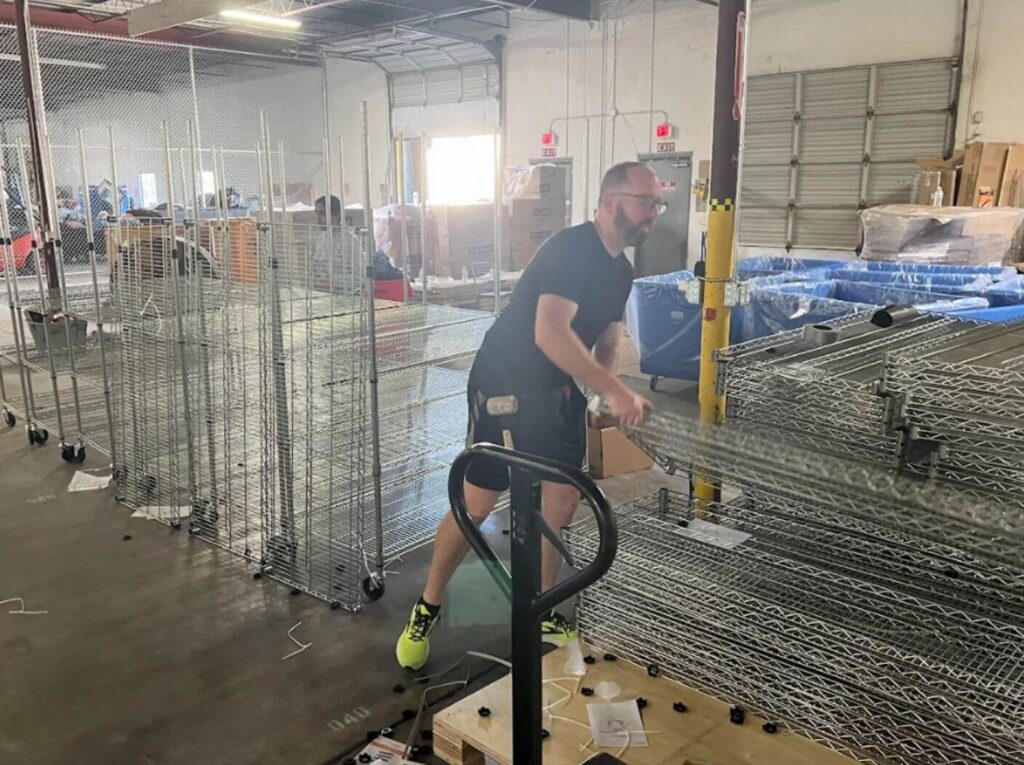You never really know what the day will bring in a secondhand retail business.
One day your warehouse is overflowing, the next you’re scrambling to fill shelves. A rare designer handbag shows up in the donation pile, but will it be priced right? And what about last season’s summer shorts still sitting in the corner?
If any of this sounds familiar, you are not alone. The good news is they can be solved with the right processes and tools.
Here are 9 common inventory challenges secondhand retailers face, and proven strategies to keep your business moving forward.
1. Unpredictable Inventory and Product Mix
Strong sourcing strategies are the lifeline of consistent e-commerce inventory. Building donor and supplier relationships is crucial, as regular contributions from trusted sources stabilize your flow of goods and improve overall quality.
Community donation drives, VIP donor programs, and partnerships with local businesses can open up steady streams of valuable items. Estate services, liquidation companies, and even law enforcement lost-and-found departments are sources worth tapping into.
Creating clear accept/reject lists is equally important. By outlining exactly what your operation needs, you help donors and suppliers refine what they send. This ensures donated items make it onto retail shelves or online listings, reducing time on hand, extending their total lifecycle, and aligning your warehouse with buyer demand.
2. Difficulty Identifying High-Value Items
Authentication software like Entrupy helps verify luxury handbags instantly, generating certificates that boost customer trust and resale value. For jewelry resale, the Thermo Fisher’s Niton™ XRF Analyzer provides fast, safe, non-destructive results so teams can confirm metal purity and avoid costly mistakes. Upright’s free Jewelry Identification & Testing Guide also serves as a quick-reference cheat sheet, helping staff spot valuable pieces and avoid the duds without needing to be a jeweler.
Training is equally important for spotting high-value items at intake. Upright’s Handbag Examination Guide equips staff to evaluate leather, stitching, hardware, logos, and serial numbers to separate authentic pieces from knockoffs. Teams can also create internal brand guides or use resale data to teach employees which labels are luxury, mid-market, or fast fashion and which styles sell for top dollar.

3. Pricing Items
Pricing decisions should be guided by resale data, trends, and inventory constraints. Knowing average sale prices, high-demand brands, and how quickly items move can help you maximize revenue while managing warehouse space efficiently.
Upright Labs’ Q3 Top Brands Guide provides this insight, ranking brands by average price per item, total items sold, and total revenue. Teams can prioritize high-performing items, focus on profitable categories, and make informed pricing adjustments.
Consider your organization’s goals and warehouse space constraints when listing items. Auction-style listings can accelerate turnover for rare or in-demand items, while Buy It Now (BIN) works best for predictable sales and higher-volume categories. For organizations using Upright Lister, dynamic pricing can take these insights a step further, automatically adjusting prices based on market trends to optimize margins and stay competitive.
4. Listing Quickly and Accurately
Efficient listing is essential for keeping inventory moving and maintaining consistency across marketplaces. Upright Lister’s customizable workflows and bulk editing tools help teams list faster without sacrificing accuracy. Builder Templates automatically populate titles, descriptions, and required fields, reducing repetitive work and cutting average listing time in half.
Automation extends beyond initial listings. Lister tracks item movements, schedules relistings, and generates purge lists to ensure your inventory lifecycle is managed with minimal manual effort. Bulk editing and multi-channel inventory views make handling diverse products seamless.
For teams looking to scale quickly, Upright Labs offers a Professional Services Builder Template Optimization Program that provides custom setup, category refreshes, and training to implement templates efficiently and help operations run smoothly and error-free.

5. Shelves Full of Stale Inventory
Old or slow-moving stock ties up space, reduces turnover, and limits profitability. And if you’re leasing warehouse space, every unsold item sitting on a shelf is eating into your rent each month. Listing durations can contribute to stale inventory if they are too long, include too many steps, too few steps, or have no automatic price drops. Purging dead inventory (items that did not sell) by creating bundles or lots, re-donations, or utilizing recycling services frees valuable warehouse space for high-demand items.
Discounting strategically can accelerate movement, and selling in bulk or lots helps clear inventory efficiently. Upright Lister tracks inventory age and flags slow movers for removal or repricing. Combining effective listing durations, purges, and data-informed decisions keeps shelves lean, inventory fresh, and operations profitable.
6. Limited Storage Space
E-commerce operations can face physical constraints, making strategic inventory decisions essential. Smaller warehouses or limited shelf space require prioritizing fast-moving, high-value items over slower sellers. Running sell-through reports by category reveals what products sell better than others, while sell-through reports by strategy reveal which products/categories/strategies sell quickly, helping teams adjust sourcing and listing approaches.
Setting size limits on items sent to e-commerce can reduce storage strain and handling complexity. Targeting your local community with pickup options can also relieve warehouse pressure while still generating sales for bulky items. Combining these approaches ensures your inventory is optimized for both space and profitability.
7. Disorganized Warehouse
Standardize your storage units with modular shelving and wheels to allow flexible layouts as inventory grows or changes. Clear location sequencing using intuitive numbers instead of letters helps staff find items quickly. Consistent labeling and barcode systems for units, shelves, and bins minimize search time and reduce picking errors.
Regular audits are crucial to ensure physical inventory matches listings, reducing the chances of overselling or misplacing items. Implement daily checklists to track new arrivals, confirm locations, and identify dead stock. Tailor your approach to team size, cross-training smaller teams, and assigning specialized roles for larger operations.

8. Forecasting Trends and Demand
Data-driven forecasting helps your organization anticipate buyer behavior and plan inventory strategically. For Upright Lister users, utilize Lister’s reporting tools alongside our Top Brands Guide to identify trends in category performance, average sale prices, and sell-through rates. By analyzing historical performance and current market patterns, you can predict which products will be in demand and prioritize sourcing accordingly.
Lister’s analytics provide real-time insights across your categories and subcategories, helping teams adjust inventory levels, pricing, set optimal listing durations, and focus resources on the items that matter most. This proactive approach helps reduce slow-moving inventory, maximize revenue, and keep your e-commerce operation aligned with market demand.
9. Logistical Challenges
Limited trucks, irregular pickup and delivery schedules, or large deliveries of product can create operational inefficiencies and bottlenecks that slow e-commerce operations down. One day, the e-commerce team doesn’t have product to list, and the next, they have more than there is space to house. This can cause a delay in revenue and a breakdown in FIFO.
Maintaining regular deliveries of products to your e-commerce operation prevents false backlogs and keeps the workflow steady. Scheduling regular pickup routes ensures items arrive on a reliable, predictable schedule.
In the warehouse, organizing stock by arrival date and tracking inventory with Lister allows teams to follow FIFO. Using these methods also makes auditing simpler and more accurate, helping teams quickly spot discrepancies and maintain inventory accuracy.

Turning Challenges into Opportunities
The right tools and processes can make a measurable difference in your secondhand retail business. Using resale data, standardized workflows, dynamic pricing, and automated listing tools like Upright Lister helps teams move inventory faster, reduce errors, and make data-driven decisions. Regular audits, strategic purges, and optimized warehouse practices keep shelves lean, prioritize high-demand items, and allocate resources effectively.
Unlock the full potential of your e-commerce operations:
🚀 Schedule a demo of Upright Lister to see how automation and dynamic pricing can streamline your operations.
🤝 Consult with our Professional Services team for tailored solutions and hands-on guidance to optimize your workflows.
🔖 Download The Definitive Guide to Secondhand Retail Inventory Management for deeper insights and actionable strategies to grow your business.


